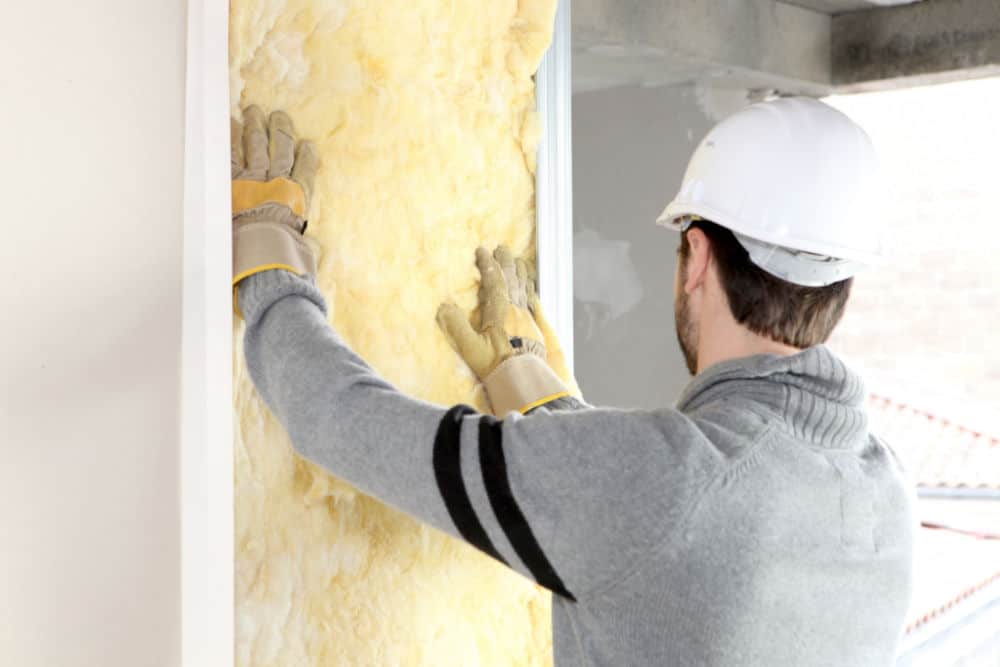Just because a house is tiny doesn’t mean you should sacrifice the comfort of a well-insulated home. Many people switch to tiny houses so they can travel across the country, meaning that insulation is a top priority, especially if they travel to super warm or cold climates. How do tiny homes stand up to traditional homes?
Tiny homes are typically well-insulated. The insulation of the tiny home will depend on how it was built. If you build a tiny home from the ground up, you’ll be able to choose which type of insulation is used so you can make sure your home will stay cool in the summer or toasty in the winter.
This article will look at the types of insulation available for tiny homes and ways to make sure your home is well-insulated.
How Tiny Homes Compare to Traditional Homes
Owning a home is a big deal, especially if it’s a big home. The cost of heating in the winter and air conditioning in the summer can build up. Sometimes it’s necessary to bundle up or open windows just to keep the bills down.
Tiny homes will save you money when it comes to heating and cooling. Building a tiny home can be cheap or expensive; some houses can cost up to $150,000. The more amenities you add to the house, the more expensive it will be. If you splurge on excellent insulation, it can save you a fortune in the long run.
Think about it: in a traditional home, you have to heat or cool a kitchen, living room, bedrooms, and bathrooms. It gets expensive pretty quickly. On the other hand, tiny homes only have two or three miniature rooms, if even that. You have one space that usually functions as the kitchen, bedroom, living room, and dining room. The second space is the toilet and shower area, which won’t require much heating and cooling.
It’s a small space that won’t need too much regulation, and spending winter in a tiny home will be much cheaper than in a 4-bedroom house.
All About Insulation
Insulation is important in any size of a house. It prevents you from becoming too hot or too cold, which can be dangerous in some situations. It’s crucial to know how insulation works when you’re building or buying a tiny home so you can make sure you know that you’re getting the right materials that will do the best job.
How Does It Work?
Insulation doesn’t create heat. Instead, it slows down the pace of the heat. Heat moves to colder areas. When it’s cold outside, the heat inside your home will move to the outdoors as it’s able to. When it’s hot outside, the heat will move into the cool house. Insulation is a barrier that keeps heat in or out, depending on what time of year it is.
R-Value
The R-value of insulation measures how well the insulation can slow down or resist the heat flow. The higher the R-value, the better the insulation is.
Typical insulation for walls is around R-3 per inch, but it can vary greatly. How can you tell if that’s good or bad? The R-value is R-45 per inch in vacuum insulated panels used in refrigerators and shipping units. On the other end of the scale, bricks only have R-0.2 per inch.
Since it’s measured by the inch, thicker layers of low R-value insulation will perform better than thin layers of high R-value insulation. This is something to be considered when building a tiny home.
What Kinds Are There?
There are many types of insulation to choose from, some of which are more environmentally friendly than others. Here are some great options for tiny houses along with their R-values per inch:
| Fiberglass insulation | 3.1 |
| Rock wool | 3.3 |
| Denim/cotton | 3.5 |
| Open-cell insulation | 3.7 |
| Expanded polystyrene (EPS) | 3.8 |
| Extruded polystyrene insulation (XPS) | 5 |
| Closed-cell insulation | 6 |
| Polyisocyanurate foam boards (ISO) | 6.7 |
What to Insulate in a Tiny Home
Walls aren’t the only part of the tiny home that needs to be insulated. Everywhere that warm air can escape or enter the home will need to have some kind of insulation. Depending on your budget, you can get some swanky options like heated floors when installing insulation.
Doors and Windows
Doors and windows are prime places where heat can pass through. It’s worth the price to have high-quality windows and doors installed. Look for double or triple-pane options since thicker materials are harder for heat to move through.
If you’re building a tiny home yourself, make sure there aren’t any holes or cracks between the frame and the wood. It can be challenging to find something that fits flawlessly, but you can use foam sealant to close up the gaps.
This is arguably the most important step. Everything else you insulate is useless if your doors and windows aren’t installed correctly.
Floors
The floor of a tiny home should be thick enough to stay warm. Whether the tiny home is on wheels or a foundation, it needs to have some kind of insulation so the temperature can be regulated. The ground can become super hot or cold in extreme weather, and it will greatly affect the temperature of your home.
There are two options you can use for a tiny home:
- Wooden subfloor: Using a waterproof wood on the very bottom of the home will help regulate temperatures. Insulation will be placed between the waterproof wood and the plywood that goes underneath the wood or tile you walk on. Use a higher R-value of insulation in the bathroom since the temperature will fluctuate more often in there.
- Concrete: If you’re going to move your tiny home around, a concrete foundation won’t work. This option is only available for those who want to keep their tiny home fixed in one spot. Concrete is poured into the ground to stabilize the temperature.
Roof and Walls
The roof and walls have a similar insulation process. You’ll place the insulation between two layers. The thicker the insulation, the better regulated the temperature will be. As mentioned above, there are several options of insulation to choose from, so you can choose the best for you.
If you live in an area with extreme weather or plan on traveling to these areas, it’s best to go with the thickest option available.
Remember to Ventilate
Mold can grow on insulation if it isn’t ventilated enough. Insulation is placed between two layers of wall, floor, or roof. Condensation can build up, and it will eventually form mold. Vents are the easiest way to prevent this from happening since they allow air to pass through freely.
If the tiny home has heating and air conditioning, it will need some type of ventilation system to prevent mold from growing. Mold can grow if you don’t have an air system in place, but it won’t be as big of an issue.
If condensation is able to form in the insulation, you will need to ventilate the area.
Conclusion
Tiny homes can easily be well-ventilated. If you’re looking to purchase a tiny home, be sure to ask the seller several questions about the insulation to make sure you know how well it’s insulated and ventilated.
If you want to build one yourself, make sure you know which kind of insulation you’re using and how compatible it is with the home you’re building.
A well-ventilated tiny home is considerably cheaper to heat and cool compared to a traditional home if the insulation is installed properly. It will be well worth the investment to splurge on expensive insulation.

